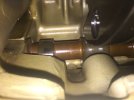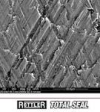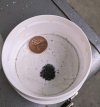AV8R_87
Line Up and Wait
I've seen logbook entries and people posting on forums (this included) with the claim that their engine doesn't make any metal.
I'm having trouble believing that is 100% accurate. Is it just a case of people looking at the filter, seeing a few specs and dismissing that as normal wear and tear vs an engine that's tearing itself apart?
Just looking at the cylinder wear limits for an O-320, quick back of the envelope math would indicate that over a 2000 hour life, a set of cylinders wearing down to minimum would generate about 3.5 ounces of metal.
That's close to a tenth of an ounce per oil change, assuming even wear over 40 oil changes.
Spreading those steel filings on a layer 0.02" thick would give you a 1.5"x1.5" square. Yes, cylinders probably wear less than that, but even at an eighth of that wear you'd still get a patch of filings that's a 0.5" square. And then there's other things wearing inside the engine (rings, gears, bearings, cams and lifters).
There is wear inside those engines, otherwise we'd never need to overhaul them. Flight school planes usually don't sit enough for cam corrosion to be a factor, yet they still need overhauling. There has to be some amount of metal being generated all the time. Why do we have all those people that say "my engine doesn't make any metal"?
What am I missing?
I'm having trouble believing that is 100% accurate. Is it just a case of people looking at the filter, seeing a few specs and dismissing that as normal wear and tear vs an engine that's tearing itself apart?
Just looking at the cylinder wear limits for an O-320, quick back of the envelope math would indicate that over a 2000 hour life, a set of cylinders wearing down to minimum would generate about 3.5 ounces of metal.
That's close to a tenth of an ounce per oil change, assuming even wear over 40 oil changes.
Spreading those steel filings on a layer 0.02" thick would give you a 1.5"x1.5" square. Yes, cylinders probably wear less than that, but even at an eighth of that wear you'd still get a patch of filings that's a 0.5" square. And then there's other things wearing inside the engine (rings, gears, bearings, cams and lifters).
There is wear inside those engines, otherwise we'd never need to overhaul them. Flight school planes usually don't sit enough for cam corrosion to be a factor, yet they still need overhauling. There has to be some amount of metal being generated all the time. Why do we have all those people that say "my engine doesn't make any metal"?
What am I missing?



